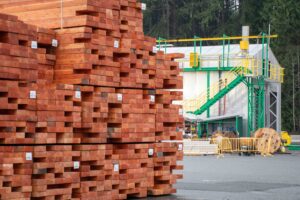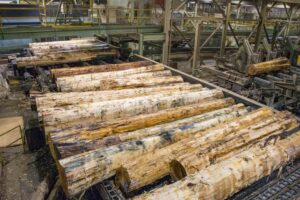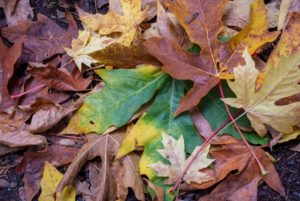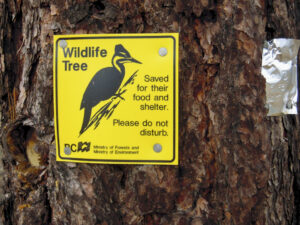 The US Lumber Coalition says financial support pledged by Canada risks deepening the long-running trade dispute. The Quebec Forest Industry Council disagrees, saying that “even the Department of Commerce has long since ceased to consider loan guarantees as subsidies,” and Canada’s aid package also aims to boost domestic demand, thus reducing exports to the US. For more coverage on this story and others, please go directly to at website at this link: treefrogcreative.ca/news/. Bookmark it and check in anytime.
The US Lumber Coalition says financial support pledged by Canada risks deepening the long-running trade dispute. The Quebec Forest Industry Council disagrees, saying that “even the Department of Commerce has long since ceased to consider loan guarantees as subsidies,” and Canada’s aid package also aims to boost domestic demand, thus reducing exports to the US. For more coverage on this story and others, please go directly to at website at this link: treefrogcreative.ca/news/. Bookmark it and check in anytime.
Finally, a reminder that The Tree Frog News is taking a short summer break this week. While we’ll still bring you forestry news each morning, our coverage may be “lighter” — without the detailed Takeaway.
Kelly McCloskey, Tree Frog News Editor
 The Liberal government has released a proposal for its new housing entity, laying out suggested loan offerings and other details ahead of the planned fall launch. …The Liberals said the new entity would develop and manage affordable housing projects and partner with builders for the construction phase, providing $10 billion in low-cost financing and capital to affordable home builders. …The BCH would also provide $25 billion in debt financing and $1 billion in equity financing to prefabricated home builders, with the Liberals saying the housing type can reduce construction times by up to 50 per cent and lower costs by up to 20 per cent. The entity would issue bulk orders of units from manufacturers to create sustained demand.
The Liberal government has released a proposal for its new housing entity, laying out suggested loan offerings and other details ahead of the planned fall launch. …The Liberals said the new entity would develop and manage affordable housing projects and partner with builders for the construction phase, providing $10 billion in low-cost financing and capital to affordable home builders. …The BCH would also provide $25 billion in debt financing and $1 billion in equity financing to prefabricated home builders, with the Liberals saying the housing type can reduce construction times by up to 50 per cent and lower costs by up to 20 per cent. The entity would issue bulk orders of units from manufacturers to create sustained demand. The US lumber industry says new financial support pledged by Canada to domestic forestry companies risks deepening the neighbors’ long-running trade dispute, and may result in yet more import taxes. Last week Prime Minister Mark Carney promised as much as C$1.2 billion in loan guarantees, grants and contributions for Canadian sawmills to pursue product development and market diversification — in response to what he said were unjustified US import taxes. Three days later, US Department of Commerce separately confirmed it would more than double combined anti-dumping and countervailing duties on Canadian softwood lumber. …“We will absolutely be asking Commerce to look at whether companies received a distortive benefit from this package,” said Whitney Rolig, who acts as lead attorney for the US Lumber Coalition. …The Quebec Forest Industry Council said that “even the Department of Commerce has long since ceased to consider loan guarantees as subsidies,” and the aid package also aims to boost domestic demand.
The US lumber industry says new financial support pledged by Canada to domestic forestry companies risks deepening the neighbors’ long-running trade dispute, and may result in yet more import taxes. Last week Prime Minister Mark Carney promised as much as C$1.2 billion in loan guarantees, grants and contributions for Canadian sawmills to pursue product development and market diversification — in response to what he said were unjustified US import taxes. Three days later, US Department of Commerce separately confirmed it would more than double combined anti-dumping and countervailing duties on Canadian softwood lumber. …“We will absolutely be asking Commerce to look at whether companies received a distortive benefit from this package,” said Whitney Rolig, who acts as lead attorney for the US Lumber Coalition. …The Quebec Forest Industry Council said that “even the Department of Commerce has long since ceased to consider loan guarantees as subsidies,” and the aid package also aims to boost domestic demand. It will take time to fully understand the implications of a landmark court ruling that appears to place Aboriginal title in British Columbia above standard private property rights. But already, there’s a fierce political debate. The BC Supreme Court ruled that the Cowichan Tribes holds title over federal, city and private land in Richmond that it historically used as a fishing village. This title sits higher in the legal hierarchy than fee simple land rights of other current owners. The ruling could set a precedent that fundamentally changes the security of standard private property in B.C. …Eby’s comments hit at the core of the fallout — that with most of British Columbia identified by First Nations as traditional territory, the court ruling could scare away not only the general public but businesses considering investing in the province. …But Justice Young appeared to set a new precedent by calling Aboriginal title the “senior interest in land vis-a-vis the fee simple titles.”
It will take time to fully understand the implications of a landmark court ruling that appears to place Aboriginal title in British Columbia above standard private property rights. But already, there’s a fierce political debate. The BC Supreme Court ruled that the Cowichan Tribes holds title over federal, city and private land in Richmond that it historically used as a fishing village. This title sits higher in the legal hierarchy than fee simple land rights of other current owners. The ruling could set a precedent that fundamentally changes the security of standard private property in B.C. …Eby’s comments hit at the core of the fallout — that with most of British Columbia identified by First Nations as traditional territory, the court ruling could scare away not only the general public but businesses considering investing in the province. …But Justice Young appeared to set a new precedent by calling Aboriginal title the “senior interest in land vis-a-vis the fee simple titles.”

 OTTAWA — Canada’s housing crisis may get worse before it starts to show much relief, as new projections say that the number of housing starts will actually decrease this year and next. These new estimates, from both public and private sector housing forecasts, contradict political promises from all levels of government to boost supply of homes across the country. The Canada Mortgage and Housing Corporation (CMHC) forecasts that the total number of housing starts in Canada this year will be about 237,800, down from 245,367 in 2024. CMHC, a Crown corporation that acts as Canada’s national housing agency, also forecasts a drop to no more than 227,734 next year and 220,016 in 2027. Those forecasts are all below the 267,000 annual output for housing starts from 2021-22 and less than half the 480,000 that the CMHC says Canada needs to add each year over the next decade.
OTTAWA — Canada’s housing crisis may get worse before it starts to show much relief, as new projections say that the number of housing starts will actually decrease this year and next. These new estimates, from both public and private sector housing forecasts, contradict political promises from all levels of government to boost supply of homes across the country. The Canada Mortgage and Housing Corporation (CMHC) forecasts that the total number of housing starts in Canada this year will be about 237,800, down from 245,367 in 2024. CMHC, a Crown corporation that acts as Canada’s national housing agency, also forecasts a drop to no more than 227,734 next year and 220,016 in 2027. Those forecasts are all below the 267,000 annual output for housing starts from 2021-22 and less than half the 480,000 that the CMHC says Canada needs to add each year over the next decade. Castlegar sawmill and mass timber producer Kalesnikoff Lumber received a mention from Prime Minister Mark Carney on Aug. 5 during a visit to Kelowna. Carney was talking about his government’s Build Canada Homes initiative when he brought up Kalesnikoff’s innovations. The Build Canada Homes program prioritizes domestic materials in construction and requires companies contracting with the federal government to source Canadian lumber. It also calls for the use of Canadian technologies and resources in off-site construction of prefabricated and modular homes. “One example of the possibilities, just a few hours drive from here in Castlegar, Kalesnikoff Mass Timber recently opened its 100,000-square-foot mass timber prefabrication and modular facility – the first of its kind in North America,” said Carney. “They’re adding new products and services, including prefabricated wall panels, mass timber modules, and trusses designed and manufactured for construction efficiency.”
Castlegar sawmill and mass timber producer Kalesnikoff Lumber received a mention from Prime Minister Mark Carney on Aug. 5 during a visit to Kelowna. Carney was talking about his government’s Build Canada Homes initiative when he brought up Kalesnikoff’s innovations. The Build Canada Homes program prioritizes domestic materials in construction and requires companies contracting with the federal government to source Canadian lumber. It also calls for the use of Canadian technologies and resources in off-site construction of prefabricated and modular homes. “One example of the possibilities, just a few hours drive from here in Castlegar, Kalesnikoff Mass Timber recently opened its 100,000-square-foot mass timber prefabrication and modular facility – the first of its kind in North America,” said Carney. “They’re adding new products and services, including prefabricated wall panels, mass timber modules, and trusses designed and manufactured for construction efficiency.” One of Revelstoke’s most popular mountains for Nordic skiing and cycling has reappeared on the map for B.C.’s lumber licensee, raising questions of how recreationists’ favourite routes could be impacted. Within the last year, BC Timber Sales (BCTS) issued a Forestry Operations Map outlining plans for Mount MacPherson, home to the Revelstoke Nordic Ski Club (RNSC) and various Revelstoke Cycling Association trails. Currently, several dozen hectares in the Wetask-Mt. MacPherson area are licensed for cut blocks, while several hectares more are mapped for retention areas and roads. …Operations are indicated to run until 2027, and all six cut block licenses have a planned development date of last Jan. 15. In a statement the Ministry of Forests said one of its recent licences was auctioned last spring and will be harvested this fall or winter. Another licence currently sits in the development stage, slated for auction next summer.
One of Revelstoke’s most popular mountains for Nordic skiing and cycling has reappeared on the map for B.C.’s lumber licensee, raising questions of how recreationists’ favourite routes could be impacted. Within the last year, BC Timber Sales (BCTS) issued a Forestry Operations Map outlining plans for Mount MacPherson, home to the Revelstoke Nordic Ski Club (RNSC) and various Revelstoke Cycling Association trails. Currently, several dozen hectares in the Wetask-Mt. MacPherson area are licensed for cut blocks, while several hectares more are mapped for retention areas and roads. …Operations are indicated to run until 2027, and all six cut block licenses have a planned development date of last Jan. 15. In a statement the Ministry of Forests said one of its recent licences was auctioned last spring and will be harvested this fall or winter. Another licence currently sits in the development stage, slated for auction next summer. On the two-year anniversary of the deadly wildfires in Lahaina, Hawaii, the Arbor Day Foundation launched its effort to help replant lost tree canopy. The Foundation distributed more than 580 trees alongside its local planting partner The Outdoor Circle, in collaboration with Treecovery Hawaii and The Royal Lahaina Resort & Bungalows.“Recovery from a wildfire of this scale can take years, but the Arbor Day Foundation is committed to being here for the long haul. We’re proud to work alongside the passionate advocates at The Outdoor Circle to help regrow a flourishing community canopy,” said Dan Lambe, chief executive of the Arbor Day Foundation. “We know trees won’t replace all of what’s been lost in Lahaina, but they can help grow new roots of resilience and nurture hope for the future.”
On the two-year anniversary of the deadly wildfires in Lahaina, Hawaii, the Arbor Day Foundation launched its effort to help replant lost tree canopy. The Foundation distributed more than 580 trees alongside its local planting partner The Outdoor Circle, in collaboration with Treecovery Hawaii and The Royal Lahaina Resort & Bungalows.“Recovery from a wildfire of this scale can take years, but the Arbor Day Foundation is committed to being here for the long haul. We’re proud to work alongside the passionate advocates at The Outdoor Circle to help regrow a flourishing community canopy,” said Dan Lambe, chief executive of the Arbor Day Foundation. “We know trees won’t replace all of what’s been lost in Lahaina, but they can help grow new roots of resilience and nurture hope for the future.” Despite attempts to save it, the longstanding Pixelle Specialty Solutions in Chillicothe closed its doors permanently on Sunday. The southern Ohio paper mill announced its planned closure in April after nearly 200 years of operating in Ross County. Local leaders and state representatives alike pushed to delay its shuttering, but ultimately the company ceased production this weekend. Not only did the paper mill employ more than 800 people, it fed a larger industry in the state. Executive director of the Ohio Forestry Association Jenna Reese said the mill’s closure will hurt Ohio loggers. “This is gonna have ripple effects throughout the state,” she said. “We’re unfortunately anticipating attrition.” With nearly 8 million acres of forest in Ohio, logging is a major industry. It contributes $1.1 billion to the state economy annually, according to Reese. Forest products, more broadly, make up more than a quarter of Ohio’s agricultural industry, which tops the state.
Despite attempts to save it, the longstanding Pixelle Specialty Solutions in Chillicothe closed its doors permanently on Sunday. The southern Ohio paper mill announced its planned closure in April after nearly 200 years of operating in Ross County. Local leaders and state representatives alike pushed to delay its shuttering, but ultimately the company ceased production this weekend. Not only did the paper mill employ more than 800 people, it fed a larger industry in the state. Executive director of the Ohio Forestry Association Jenna Reese said the mill’s closure will hurt Ohio loggers. “This is gonna have ripple effects throughout the state,” she said. “We’re unfortunately anticipating attrition.” With nearly 8 million acres of forest in Ohio, logging is a major industry. It contributes $1.1 billion to the state economy annually, according to Reese. Forest products, more broadly, make up more than a quarter of Ohio’s agricultural industry, which tops the state. Every spring, Forest Service fire leaders meet to plan for the upcoming fire season. This year, some employees were shocked by the blunt remarks made during a meeting with forest supervisors and fire staff officers from across the Intermountain West. “We were told, ‘Help is not on the way,’” said one employee, who asked to remain anonymous for fear of losing their job. “I’ve never been told that before.” Agency leaders already knew it might be a bad wildfire season, made worse by having fewer hands available to help out. According to the employee High Country News spoke to, the Forest Service lost at least 1,800 fire-qualified, or “red-carded,” employees through layoffs, deferred resignation, and retirement offers. In total, 4,800 people left the agency. “We were told: Don’t commit to an attack thinking the cavalry is going to come,” the employee said. As fire activity continues to pick up across much of the West, that warning rings true. [a free subscription is required to read the original article,
Every spring, Forest Service fire leaders meet to plan for the upcoming fire season. This year, some employees were shocked by the blunt remarks made during a meeting with forest supervisors and fire staff officers from across the Intermountain West. “We were told, ‘Help is not on the way,’” said one employee, who asked to remain anonymous for fear of losing their job. “I’ve never been told that before.” Agency leaders already knew it might be a bad wildfire season, made worse by having fewer hands available to help out. According to the employee High Country News spoke to, the Forest Service lost at least 1,800 fire-qualified, or “red-carded,” employees through layoffs, deferred resignation, and retirement offers. In total, 4,800 people left the agency. “We were told: Don’t commit to an attack thinking the cavalry is going to come,” the employee said. As fire activity continues to pick up across much of the West, that warning rings true. [a free subscription is required to read the original article,  Western Apache fire management once reshaped Arizona’s forests — and tree rings prove it. A new study combining tree-ring evidence and historical data shows that for centuries, Western Apache communities systematically controlled fire activity across their homeland, reducing the role of climate in driving wildfires. Led by Southern Methodist University fire scientist Christopher Roos, the research analyzed 649 fire-scarred trees from 34 sites in central and eastern Arizona and compared them to several thousand samples from the broader Southwest. The findings, published in the Proceedings of the National Academy of Sciences, show that Apache burns were more frequent, smaller, and timed differently than fires elsewhere in the region. Scientists found that in Apache territory, fires often occurred in late April and May — months when community members were engaged in subsistence activities in pine forests.
Western Apache fire management once reshaped Arizona’s forests — and tree rings prove it. A new study combining tree-ring evidence and historical data shows that for centuries, Western Apache communities systematically controlled fire activity across their homeland, reducing the role of climate in driving wildfires. Led by Southern Methodist University fire scientist Christopher Roos, the research analyzed 649 fire-scarred trees from 34 sites in central and eastern Arizona and compared them to several thousand samples from the broader Southwest. The findings, published in the Proceedings of the National Academy of Sciences, show that Apache burns were more frequent, smaller, and timed differently than fires elsewhere in the region. Scientists found that in Apache territory, fires often occurred in late April and May — months when community members were engaged in subsistence activities in pine forests. Near the bottom of a shady hillside in Jericho, a lone beech tree stretches high into the canopy, a relic of a bygone forest. Through luck or (hopefully) genetics, this mighty tree has avoided contracting beech bark disease—a fatal fungal pathogen that has proven deadly to mature beech trees. And it stands just outside a hotspot where a new pathogen called beech leaf disease (BLD) is spreading across Vermont forests. “Beech is here a lot as a sapling … but if you look out into the forest it’s not really common in the overstory,” said Jess Wikle Ph.D. ’24, lecturer in forestry and manager of the University of Vermont’s Research Forests. The beech trees that do succumb often send out a series of root sprouts before they die, turning a forest of big trees into a thicket of saplings. Beech leaf disease is different. It seems to be spreading faster and young beech trees tend to die first.
Near the bottom of a shady hillside in Jericho, a lone beech tree stretches high into the canopy, a relic of a bygone forest. Through luck or (hopefully) genetics, this mighty tree has avoided contracting beech bark disease—a fatal fungal pathogen that has proven deadly to mature beech trees. And it stands just outside a hotspot where a new pathogen called beech leaf disease (BLD) is spreading across Vermont forests. “Beech is here a lot as a sapling … but if you look out into the forest it’s not really common in the overstory,” said Jess Wikle Ph.D. ’24, lecturer in forestry and manager of the University of Vermont’s Research Forests. The beech trees that do succumb often send out a series of root sprouts before they die, turning a forest of big trees into a thicket of saplings. Beech leaf disease is different. It seems to be spreading faster and young beech trees tend to die first. The European Court of Justice (ECJ) has issued a ruling on suspending logging to protect bird nesting sites in Estonia. However, the Ministry of Climate and forestry industry representatives interpret the ruling in opposing ways, each claiming their stance is the right one. The final decision on the matter is set to be made in the autumn by the Estonian Supreme Court, which should clarify whether current practices will be changed or not. Head of the Ministry of Climate’s Biodiversity Protection Department, Timo Kark, said overall the ECJ considered the suspension of logging to be justified. “In the opinion of the European Court, the birds directive must be interpreted such that its provisions apply to all bird species, including those that are not protected. So any activity that may result in birds being killed, such as logging during the spring-summer nesting period, can be suspended,” Kark said.
The European Court of Justice (ECJ) has issued a ruling on suspending logging to protect bird nesting sites in Estonia. However, the Ministry of Climate and forestry industry representatives interpret the ruling in opposing ways, each claiming their stance is the right one. The final decision on the matter is set to be made in the autumn by the Estonian Supreme Court, which should clarify whether current practices will be changed or not. Head of the Ministry of Climate’s Biodiversity Protection Department, Timo Kark, said overall the ECJ considered the suspension of logging to be justified. “In the opinion of the European Court, the birds directive must be interpreted such that its provisions apply to all bird species, including those that are not protected. So any activity that may result in birds being killed, such as logging during the spring-summer nesting period, can be suspended,” Kark said. The First Minister has today opened a new £26 million facility to help grow more trees for Scotland’s forests and woodlands. Newton Tree Nursery, near Elgin, will support Forestry and Land Scotland to almost treble their tree production – from seven million to nearly 20 million trees per year by 2029. It will help support the sustainable management of Scotland’s national forests and land and help tackle the climate emergency, while also supporting the rural economy. Seedling operations at the redeveloped tree nursery began in March 2025 and 12 million trees have already been established within the glasshouse. The new nursery is the UK’s largest and most advanced tree-growing glasshouse and sets a new standard for bio secure, sustainable, and high-volume forest nursery production. The facility ensures that an adequate supply of high-quality trees is available to supply the publicly managed forests of Scotland with those forests supporting rural economies, providing flood mitigation, improving biodiversity and sequestering carbon.
The First Minister has today opened a new £26 million facility to help grow more trees for Scotland’s forests and woodlands. Newton Tree Nursery, near Elgin, will support Forestry and Land Scotland to almost treble their tree production – from seven million to nearly 20 million trees per year by 2029. It will help support the sustainable management of Scotland’s national forests and land and help tackle the climate emergency, while also supporting the rural economy. Seedling operations at the redeveloped tree nursery began in March 2025 and 12 million trees have already been established within the glasshouse. The new nursery is the UK’s largest and most advanced tree-growing glasshouse and sets a new standard for bio secure, sustainable, and high-volume forest nursery production. The facility ensures that an adequate supply of high-quality trees is available to supply the publicly managed forests of Scotland with those forests supporting rural economies, providing flood mitigation, improving biodiversity and sequestering carbon. When we hear the terms “biodiversity crisis” and “mass extinction”, charismatic animals such as tigers, rhinos and sea turtles often spring to mind. But what about the small, inconspicuous species that play an important role in our ecosystems despite their size? Do they receive the attention and protection they need? Mosses may seem insignificant, but they form a rich and widespread group with around 20,000 species worldwide. Despite their small size, they play an important role in many ecosystems, for example by retaining moisture, serving as carbon sinks and contributing to nitrogen fixation in forests. Yet over 30 per cent of European species are endangered or potentially endangered. Many are poorly researched and often inadequately protected.
When we hear the terms “biodiversity crisis” and “mass extinction”, charismatic animals such as tigers, rhinos and sea turtles often spring to mind. But what about the small, inconspicuous species that play an important role in our ecosystems despite their size? Do they receive the attention and protection they need? Mosses may seem insignificant, but they form a rich and widespread group with around 20,000 species worldwide. Despite their small size, they play an important role in many ecosystems, for example by retaining moisture, serving as carbon sinks and contributing to nitrogen fixation in forests. Yet over 30 per cent of European species are endangered or potentially endangered. Many are poorly researched and often inadequately protected. Recently, Meta has developed an
Recently, Meta has developed an  Hundreds of residents who were forced out of their homes by a wildfire burning near Cameron Lake on Vancouver Island are being allowed to return. The Regional District of Nanaimo (RDN) has posted an update removing 257 properties from its evacuation order, although residents remain on alert and must be ready to leave right away. The district said 37 properties in Little Qualicum River Village remain under evacuation order due to the six-square-kilometre wildfire that is now classified as being held. The B.C. Wildfire Service updated the status of the Wesley Ridge blaze, burning about 60 kilometres northwest of Nanaimo, saying it’s not expected to grow beyond its existing containment lines. An update from the wildfire service on Monday said the Wesley Ridge fire did not grow Sunday and was displaying mostly rank-one fire behaviour, a “smouldering ground fire with no open flame.”
Hundreds of residents who were forced out of their homes by a wildfire burning near Cameron Lake on Vancouver Island are being allowed to return. The Regional District of Nanaimo (RDN) has posted an update removing 257 properties from its evacuation order, although residents remain on alert and must be ready to leave right away. The district said 37 properties in Little Qualicum River Village remain under evacuation order due to the six-square-kilometre wildfire that is now classified as being held. The B.C. Wildfire Service updated the status of the Wesley Ridge blaze, burning about 60 kilometres northwest of Nanaimo, saying it’s not expected to grow beyond its existing containment lines. An update from the wildfire service on Monday said the Wesley Ridge fire did not grow Sunday and was displaying mostly rank-one fire behaviour, a “smouldering ground fire with no open flame.”